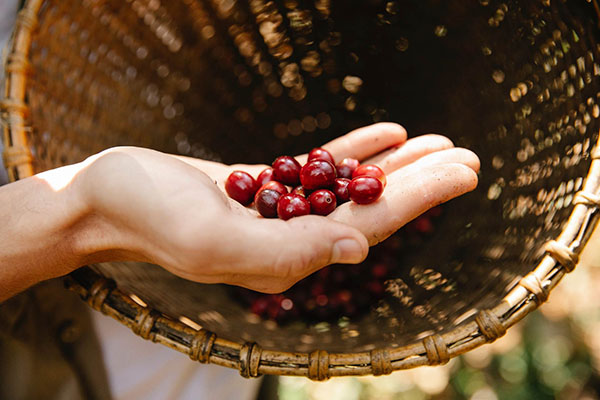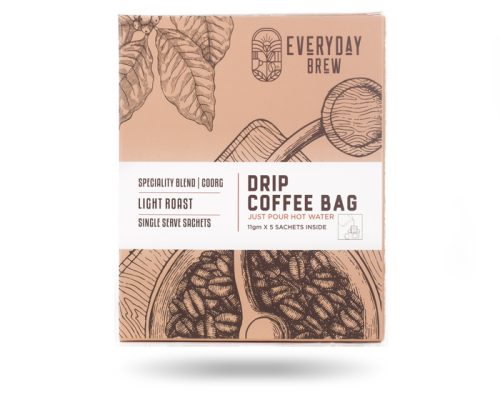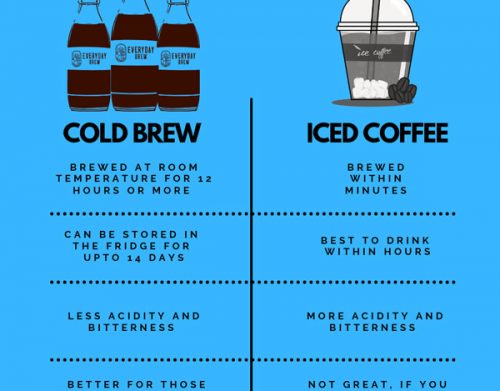DRIP BAG COFFEE What is a drip bag coffee ?...
Read More- Cold Brew Delivery service only available in Gujarat
- Customer service from 7:00 AM to 7:00 PM

Cold Brew vs Iced coffee

Fruit to bean Proces
The coffee that you enjoy so much has taken a long journey to arrive to you. Between the time they are planted, packed and purchased, coffee beans go through a series of steps to bring out their best.
PLANTING
A coffee bean is actually a seed. When dried, roasted and ground, it’s used to brew coffee. If the seed isn’t processed, it can be planted and grow into a coffee tree. Coffee seeds are generally planted in large beds in large shaded nurseries. The seedlings will be watered properly and shaded from harsh sunlight until they are ready enough to be planted. Seeds are often planted during the wet season so that the soil remains moist and the roots becomes firmly established.
HARVESTING
Depending on the variety, it will take around 3-4 years for the newly planted coffee trees to bear fruit. The fruit is called coffee cherry and it turns bright deep red when it is riped and ready to be harvested. There is typically one harvest in one year. In some countries there are two harvests maily called main crop and secondary crop. In most countries, the crop is picked by hand in an labour intensive process. But now we can see that many countries have changed their crop picking process to machanized. Whether by hand or by machine, all coffee is harvested in one of the two ways, mainly called, strip picked and selective picked. In strip picked process, the coffee cheries are stripped off of the branch one at a time, either by hand or by machine. And, in selective picking process, only the ripe cherries are harvested and they are picked individually by hand. As this kind of harvest is labour intensive and costly, it is used mainly to pick finer arabica coffee beans.

PROCESSING
The coffee processing starts as soon as the coffee has been picked to prevent fruit spoilage. There are two ways to process coffee depending on location and availabe local resources.
The Dry Method is an age old process still used in many countries with limited water resources. The freshly picked cherries are spread out on a huge surface to dry in sun. In order to prevent the cherries from spoiling, they are continuesly throughout the day. Then they are covered at night or during rain to prevent from getting wet. Depending on the weather, this process might continue with every batch for several weeks until the moisture content of the cherries drops to 11%.
In The Wet Method, the fresh cherries are passed through a pulping machine to seperate the skin and the pulp from the bean. This process removes the pulp from the cherry after harvesting so that the bean is dried with only the parchment skin left on. The beans are then seperated by weight while they are passed through water channels. The lighter beans float to the top while the heavier beans sink to the bottom. They are then seperated by size in a rotating drum. After seperation, beans are then transported to large fermentation tanks. Depending on the conditions of the beans, climate and altitude, the beans will remain in these tanks anywhere from 12 to 48 hours to remove the slick layer fo mucilage that is still attached to the parchment. When the fermentation is complete, the beans feel rough to touch and then they go to one more water rinsing process and then they are kept for drying.

DRYING
If the beans have been processed by the wet method, the pulp and the beans must be dried to properly prepare them for storage. The beans which are still inside the parchment envelope are sun dried on drying tables or floor where they are turned regularly. They can also be machine dried in large tumblers. The dried beans are called parchment coffee which are now stored in juste bags until they are ready to export.
MILLING THE BEANS
Before being exported, the coffee is being processed in two ways. Hulling machinery removes the parchment layer from wet processed coffee. Hulling dry processed coffee refers to removing the entire dried husk of the dried cherries. Polishing is an optional process where any silver skin that remains on the beans after hulling is removed by machine.
Grading and Sorting is done by size and weight, and beans are also reviewed for color flaws or other imperfections. Beans are sized by being passed through a series of screens. They are also sorted pneumatically by using an air jet to separate heavy from light beans.
Finally, defective beans are removed either by hand or by machinery. Beans that are unsatisfactory due to deficiencies (unacceptable size or color, over-fermented beans, insect-damaged, unhulled) are removed. In many countries, this process is done both by machine and by hand, ensuring that only the finest quality coffee beans are exported.
EXPORTING AND TASTING
The milled beans, now referred to as green coffee, are loaded onto ships in either jute or sisal bags which are then loaded in shipping containers, or bulk-shipped inside plastic-lined containers. Coffee is repeatedly tested for quality and taste. This process is referred to as cupping and usually takes place in a room specifically designed to facilitate the process. The taster usually called cupper evaluates the coffee beans for overall visual quality. The beans are then roasted in small batches, instantly ground and carefully brewed with controlled tempretured boiling water. After letting the coffee rest for several minutes, the cupper breaks the crust by pushing aside the grounds at the top of the cup. Again, the coffee is nosed before the tasting begins.To taste the coffee, the cupper slurps a spoonful with a quick inhalation. The objective is to spray the coffee evenly over the cupper's taste buds, and then weigh it on the tongue before spitting it out.
ROASTING
Now comes roasting the coffee. Roasting transforms the green coffee beans into brown aromatic beans that we usually purchase from our local coffee store. Most roasting machines maintain a specific roasting temperature. The beans are kept moving throughtout the entire process to keep them from burning. When they reach to a desired temperature, they begin to turn brown and the fragnant oil is locked inside the beans begins to emerge. This process is called pyrolysis is at the heart of roasting and it produces the flavour and aroma of the coffee we drink. After roasting, the beans are immedialtely cooled either by air or water. Roasting is generally performed in the importing countries because the freshly roasted beans must reach the consumer as soon as possible.
GRINDING
The objective of a proper ground is to get the most flavour in a cup of coffee. How coarse or fine the coffee is ground depends on the brewing method. The length of time the grounds will be in contact with water determines the ideal grade of grind. Usually, the finer the grind, the more quickly the coffee should be prepared. That's why coffee ground for an espresso machine is much finer than coffee brewed in a drip system.
Fruit to bean Proces
PLANTING
HARVESTING

PROCESSING
The Dry Method is an age old process still used in many countries with limited water resources. The freshly picked cherries are spread out on a huge surface to dry in sun. In order to prevent the cherries from spoiling, they are continuesly throughout the day. Then they are covered at night or during rain to prevent from getting wet. Depending on the weather, this process might continue with every batch for several weeks until the moisture content of the cherries drops to 11%.
In The Wet Method, the fresh cherries are passed through a pulping machine to seperate the skin and the pulp from the bean. This process removes the pulp from the cherry after harvesting so that the bean is dried with only the parchment skin left on. The beans are then seperated by weight while they are passed through water channels. The lighter beans float to the top while the heavier beans sink to the bottom. They are then seperated by size in a rotating drum. After seperation, beans are then transported to large fermentation tanks. Depending on the conditions of the beans, climate and altitude, the beans will remain in these tanks anywhere from 12 to 48 hours to remove the slick layer fo mucilage that is still attached to the parchment. When the fermentation is complete, the beans feel rough to touch and then they go to one more water rinsing process and then they are kept for drying.

DRYING
MILLING THE BEANS
Grading and Sorting is done by size and weight, and beans are also reviewed for color flaws or other imperfections. Beans are sized by being passed through a series of screens. They are also sorted pneumatically by using an air jet to separate heavy from light beans.
Finally, defective beans are removed either by hand or by machinery. Beans that are unsatisfactory due to deficiencies (unacceptable size or color, over-fermented beans, insect-damaged, unhulled) are removed. In many countries, this process is done both by machine and by hand, ensuring that only the finest quality coffee beans are exported.


